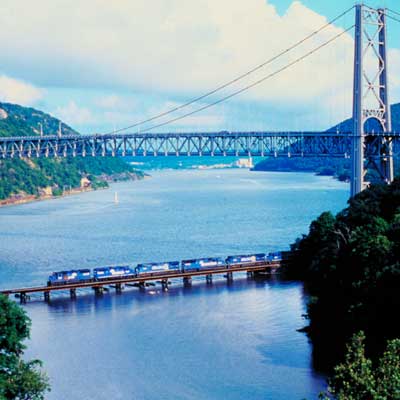Saturday, April 21, 2007
The future competitiveness of the infrastructure system presents an engineering leadership challenge
The USA’s infrastructure systems have deteriorated to the point where this country’s future economic competitiveness is in jeopardy and our elected officials, who are entrusted with safeguarding our nation’s future, have ignored the warnings. Our elected officials’ failure to maintain and improve upon the system inherited from the prior generation can be traced to a lack of political will, the influence of special interest groups, the absence of market-based decision making, and – most specifically and significantly – the use of earmarks, otherwise known as pork barrel politics. Reversing or even arresting the decline of infrastructure systems will require creative solutions and visionary leadership from the engineering community.
In this context, there are two readily-apparent ways for engineers to effect change. First, engineers need to position themselves better by seeking public office, which would provide them with proximity and access to the legislative process. Second, in order to help Congress to better understand technology transfers and complex scientific principles before implementing new policies, the engineering discipline should actively recruit and pitch its professionals for placement on lawmaker and committee staffs. This second tactic is likely to require a cultural shift in the engineering profession. Talented engineers will not readily pursue alternative but important career paths if they think that their work will be dismissed or devalued by the profession, including its societies and licensing boards. Likewise, lawmakers and committees are unlikely to understand the benefits of having engineers on their staffs and deferring to their judgment on important social issues without a significant public relations campaign. The stakes are high enough, however, that extreme measures are necessary.
In this context, there are two readily-apparent ways for engineers to effect change. First, engineers need to position themselves better by seeking public office, which would provide them with proximity and access to the legislative process. Second, in order to help Congress to better understand technology transfers and complex scientific principles before implementing new policies, the engineering discipline should actively recruit and pitch its professionals for placement on lawmaker and committee staffs. This second tactic is likely to require a cultural shift in the engineering profession. Talented engineers will not readily pursue alternative but important career paths if they think that their work will be dismissed or devalued by the profession, including its societies and licensing boards. Likewise, lawmakers and committees are unlikely to understand the benefits of having engineers on their staffs and deferring to their judgment on important social issues without a significant public relations campaign. The stakes are high enough, however, that extreme measures are necessary.
Subscribe to:
Post Comments (Atom)


14 comments:
SEBUTLER: For starters, it would be helpful if we could see some of the white papers you've written on issues related to civil engineering and social policy. Thanks in advance for posting them here, and thanks for your insights and your important "call to arms" for CE's.
xO2CC4 Your blog is great. Articles is interesting!
E6aEIO Nice Article.
3MGeQs Nice Article.
actually, that's brilliant. Thank you. I'm going to pass that on to a couple of people.
Thanks to author.
actually, that's brilliant. Thank you. I'm going to pass that on to a couple of people.
Nice Article.
Wonderful blog.
Thanks to author.
Hello all!
Nu5cq3 Magnific!
Good job!
For the beginners, it is a big help for the civil engineering and other field related to this. Thanks for posting it here. Keep up the good work.
Post a Comment